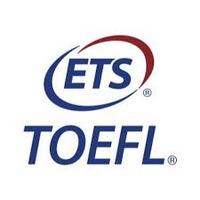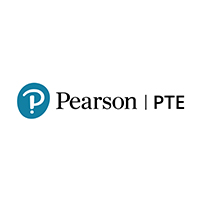VMC VIQ Scholarship Test
Register for Vidyamandir Intellect Quest. Get Scholarship and Cash Rewards.
Board of Secondary Education, Ajmer, Rajasthan conducts RBSE 12th examination every year. Around 10 lakh students appear in this examination. To appear in the RBSE class 12 exams 2025, students must have passed class 11th examination from RBSE or any other recognized board of education.
More About RBSE 12th Exams 2025:
| Full Exam Name | Rajasthan Board of Secondary Education 12th Examination |
| Short Exam Name | RBSE 12th |
| Conducting Body | Board of Secondary Education, Rajasthan |
| Frequency Of Conduct | Once a year |
| Exam Level | Intermediate |
| Languages | English +6 more |
| Mode Of Application | offline |
| Mode Of Exam | offline |
| Exam Duration | 3 Hours |
RBSE 12th Rajasthan Board of Secondary Education 12th Examination (session 2025)
In order to be eligible for appearing in the Rajasthan board class 12 examination, students must clear their class 11th from RBSE or any other recognized board of education. There is no age limit to appear in the RBSE 12th exams 2025.
In order to fill the RBSE 12th application form 2025, students have to provide details like name, date of birth, gender, address, medium, previous academic details, vocational selection, third language selection, etc. The requisite documents and certificates should be attached to the application form and submitted to the school authorities as specified.
For regular students who are enrolled in schools, the application process of RBSE 12th exams 2025 is taken care of by the respective schools only. Whereas, private students are required to fill out the RBSE 12th application form 2024 by themselves.
Also, read - Rajasthan Scholarships
This e-book contains the list of 50 top B.Tech colleges in Rajasthan as well as types of courses offered, probable fees, college ranking and necessary entrance exams here.
Download EBookThe exam pattern of the RBSE 12th exams 2025 as prescribed by the Rajasthan board is given in the table below.
| Subjects | Exam duration | Theory paper marks | Practical/internal assessment | Total marks |
| Physics | 3.15 hours | 56+14 | 30 | 100 |
| Chemistry | 3.15 hours | 56+14 | 30 | 100 |
| Biology | 3.15 hours | 56+14 | 30 | 100 |
| Maths | 3.15 hours | 80 | 20 | 100 |
| Economics | 3.15 hours | 80 | 20 | 100 |
| History | 3.15 hours | 80 | 20 | 100 |
| Geography | 3.15 hours | 56+14 | 30 | 100 |
| Accountancy | 3.15 hours | 80 | 20 | 100 |
| English | 3.15 hours | 80 | 20 | 100 |


English: Unit 01
English: Unit 02
English: Unit 03
English: Unit 04
English: Unit 05
Computer science: Unit 01
Computer science: Unit 02
Computer science: Unit 03
Informatics practices: Unit 01
Informatics practices: Unit 02
Informatics practices: Unit 03
Public administration: Unit 01
Public administration: Unit 02
Public administration: Unit 03
Public administration: Unit 04
Public administration: Unit 05
Public administration: Unit 06
Public administration: Unit 07
Public administration: Unit 08
Public administration: Unit 09
Public administration: Unit 10
Economics: Unit 01
Economics: Unit 02
Economics: Unit 03
Economics: Unit 04
Economics: Unit 05
Economics: Unit 06
Economics: Unit 07
Political science: Unit 01
Political science: Unit 02
History: Unit 01
History: Unit 02
History: Unit 03
Geography: Unit 01
Geography: Unit 02
Mathematics: Unit 01
Mathematics: Unit 02
Mathematics: Unit 03
Mathematics: Unit 04
Mathematics: Unit 05
Painting: Unit 01
Painting: Unit 02
Painting: Unit 03
Painting: Unit 04
Painting: Unit 05
Painting: Unit 06
Psychology: Unit 01
Psychology: Unit 02
Psychology: Unit 03
Psychology: Unit 04
Psychology: Unit 05
Psychology: Unit 06
Psychology: Unit 07
English literature: Unit 02
English literature: Unit 03
English literature: Unit 04
Sociology: Unit 01
Sociology: Unit 02
Accountancy: Unit 01
Accountancy: Unit 02
Business studies: Unit 01
Business studies: Unit 02
Physics: Unit 01
Physics: Unit 02
Physics: Unit 03
Physics: Unit 04
Physics: Unit 05
Physics: Unit 06
Physics: Unit 07
Physics: Unit 08
Chemistry: Unit 01
Chemistry: Unit 02
Chemistry: Unit 03
Chemistry: Unit 04
Chemistry: Unit 05
Chemistry: Unit 06
Chemistry: Unit 07
Chemistry: Unit 08
Chemistry: Unit 09
Chemistry: Unit 10
Biology: Unit 01
Biology: Unit 02
Biology: Unit 03
Biology: Unit 04
Biology: Unit 05
RBSE model papers class 12 are of utmost importance to the students appearing for the RBSE 12th exams 2025. Students will benefit from these model papers in multiple ways.
Hard work and regular practice is the way to do well in the final RBSE Class 12 board examination 2025. Here are a few preparation strategies that will be helpful for the students appearing in exams.
1. Understand the exam pattern and go through the syllabus.
2. Do not hesitate to take the help of your mentors and teachers wherever needed.
3. Make your own notes and go through them regularly.
4. Sleep and eat well. It is a good practice to go to bed early and study with a fresh mind early morning.
5. Take enough practice tests. Also, remember that numerical is very scoring. So practice them regularly, especially your weak areas.
6. Be thorough with your textbooks, and if needed, practice from supplementary books recommended by your teachers.
Also, read - Top Schools in Rajasthan
The Board of Secondary Education, Rajasthan releases the admit card of its RBSE 12th exams 2025 on its official website. Students have to log in using their roll number allotted and download their RBSE class 12th 2025 admit card.
It is compulsory for students to take a printout of the Rajasthan Board 12th admit card and carry it on the exam day, failing which candidates will be barred from appearing in the exam.
Rajasthan board will announce the RBSE 12th result in May 2025. Students can access their RBSE class 12th result from the official website of the board - rajeduboard.rajasthan.gov.in. Students will have to enter the roll number as mentioned on the admit card to access their RBSE 12th result 2025.
Details mentioned on RBSE 12th result mark sheet
1452420597


Students need to carry their admit card and valid ID proof at the time of examination.
RBSE 12th exams 2025 will be conducted for 3 hours and 15 minutes.
The RBSE Class 12 exams 2025 will be conducted in offline, pen and paper mode.
Students can download the Rajasthan Board 12th model papers 2025 from the official website, rajeduboard.rajasthan.gov.in.
RBSE 12th class 2025 date sheet will be released in January 2025.
RBSE 12th exams will be conducted from 8.30 a.m. to 11.45 am, tentatively.
RBSE 12th exams 2025 will be held from February to April 2025.
Application Date
07 Oct, 2024 - 22 Nov, 2024
Application Correction Date
08 Oct, 2024 - 27 Nov, 2024
Application Date
24 Oct, 2024 - 02 Dec, 2024
Application Date
08 Nov, 2024 - 30 Nov, 2024
Application Date
11 Nov, 2024 - 29 Nov, 2024
Late Fee Application Date
12 Nov, 2024 - 21 Nov, 2024
Exam Date
19 Nov, 2024 - 19 Nov, 2024
Exam Date
19 Nov, 2024 - 19 Nov, 2024
Exam Date
26 Nov, 2024 - 26 Nov, 2024
Application Date
29 Nov, 2024 - 29 Nov, 2024
Exam Date
03 Dec, 2024 - 03 Dec, 2024
Exam Date
03 Dec, 2024 - 03 Dec, 2024
For any issue related to the RBSE supplementary exam fees, students can reach out to the RBSE helpline. You can visit the official website of RBSE for helpline number. Also, as of 2024, the supplementary exam fees are Rs 600 for regular students and Rs 100 per subject for practical exams.
Changing from the CBSE board to the RBSE in Class 12 is generally difficult and often not ideal due to differences in syllabi and examination structures. Most boards, including RBSE , do not recommend switching in the final year of schooling. It is crucial to consult both CBSE and RBSE authorities for specific policies, but making such a change earlier is advisable to prevent academic complications.
If you fail the CBSE 12th boards, you can still prepare for the RBSE 12th boards next year. You can follow the steps given below:
Hello aspirant,
Hope you are doing absolutely great.
So with regard to your query, first of all congratulations on your score. So secondly there are various private colleges in Maharashtra providing you the Btech course, the top among these are as follows:
1. Manipal University, Jaipur
2. BITS Pilani
3. LNMIIT Jaipur
4. OPJS University
5. Banasthali Vidyapeeth
Checkout the following link for any information regarding the top Btech course providing universities in Rajasthan: https://engineering.careers360.com/colleges/list-of-private-engineering-colleges-in-rajasthan
Hope this helps you!!
The syllabus of RBSE 12th for the session 2022 is mention below along with the marks allocated with the syllabus:
You can also download the syllabus of other subjects of RBSE on the mentioned below link:
Register for Vidyamandir Intellect Quest. Get Scholarship and Cash Rewards.
As per latest 2024 syllabus. Physics formulas, equations, & laws of class 11 & 12th chapters
As per latest 2024 syllabus. Chemistry formulas, equations, & laws of class 11 & 12th chapters
Accepted by more than 11,000 universities in over 150 countries worldwide
Register now for PTE & Unlock 20% OFF : Use promo code: 'C360SPL20'. Valid till 30th NOV'24! Trusted by 3,500+ universities globally
As per latest 2024 syllabus. Study 40% syllabus and score upto 100% marks in JEE